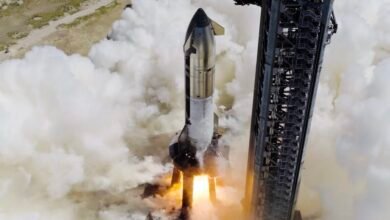Starship’s Fuel Hurdle: SpaceX’s Ingenious Solution

▼ Summary
– SpaceX’s Starbase facility includes a factory designed to produce one Starship per day and has one active launch pad with a second being prepared.
– The company aims to revolutionize spaceflight by moving away from traditional propellant delivery methods used for smaller rockets.
– Starship is exceptionally large, standing over 400 feet tall and holding over a million gallons of cryogenic propellants.
– SpaceX has regulatory approval for up to 25 annual launches from Texas and is seeking approval for up to 120 from Florida, with eventual daily launch goals.
– Current logistics involve over 200 tanker trucks per launch, causing inefficiency, pollution, and road damage, which SpaceX recognizes as a bottleneck.
If SpaceX intends to achieve its ambitious launch frequency for Starship, the company must overcome significant logistical challenges beyond rocket manufacturing and launch infrastructure. Central to this effort is the massive production facility at Starbase in South Texas, designed to build one Starship per day. Nearby, two launch pads are operational or nearing activation, setting the stage for rapid, reusable spaceflight operations.
Traditional methods of fueling rockets involve fleets of tanker trucks delivering propellant directly to launch sites, a practice SpaceX initially followed at Starbase. However, the sheer scale of Starship changes everything. Standing over 400 feet tall, the vehicle requires more than a million gallons of super-chilled liquid methane and liquid oxygen per launch, alongside substantial quantities of liquid nitrogen for system chilling and purging. This volume far exceeds anything previously handled in the aerospace industry.
Adding to the complexity, SpaceX has regulatory approval for up to 25 annual launches from Texas and is seeking permission for 120 more from Florida’s Space Coast. The long-term vision involves daily or even more frequent flights to support missions to orbit, the Moon, and Mars. Such a tempo exposes critical bottlenecks, especially in propellant supply.
Currently, each Starship launch demands over 200 tanker truck trips from distant refineries, a system plagued by inefficiency, time consumption, roadway congestion, and environmental impact. The only access road to Starbase, a two-lane highway from Brownsville, already shows severe wear from constant heavy truck traffic. Cracks and potholes underscore the unsustainable nature of this delivery model.
Recognizing these limitations, SpaceX is developing more innovative solutions to streamline propellant logistics and support its high-frequency launch goals.
(Source: Ars Technica)





